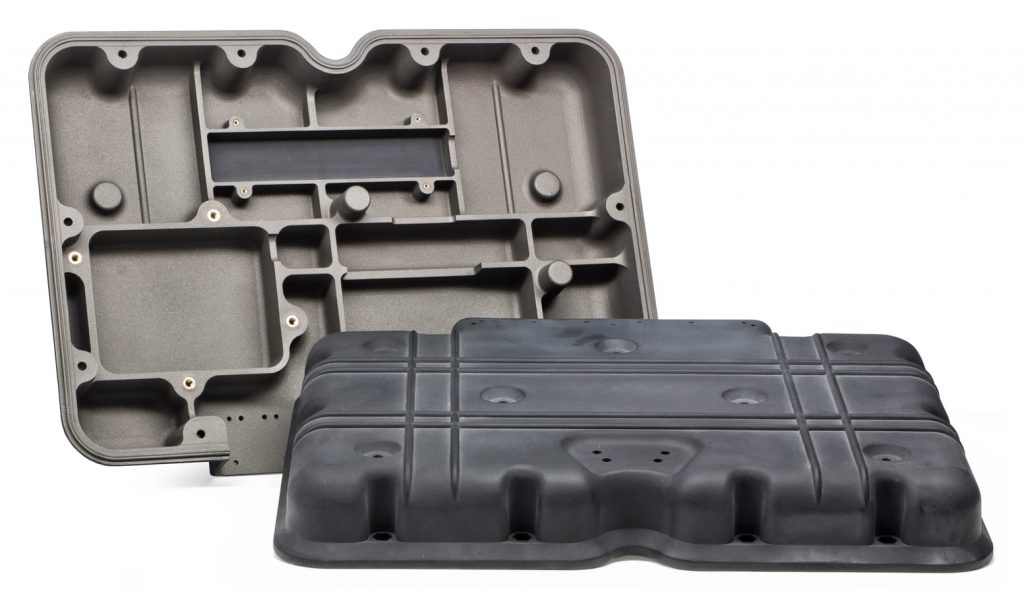Cast Urethane plastic injection molding is considered one of many Rapid Prototype Processes. Back before rapid manufacturing methods were used, cast urethane molds offered the customer affordable tooling and quick lead times as apposed to the traditional mold making process where tool steel or aluminum is used. Today, cast urethane injection molding methods still have there place in the industry. There are many limitations to these injection molds. First, they are made of Urethane which breaks down rather quickly. The tool life is expected to make 50 pieces or less, therefore if large quantities are needed, this process would not be a good choice. Also, there is a limitation to materials that can run in these molds, due to the abrasiveness of some plastic fillers.
Cast Urethane Materials Available:

- ABS-Like, High Temp ABS-Like
- PE-Like, Lexan-Like
- Glass Filled Nylon, High Strength
- Elastomer (25A, 32A, 42A, 50A, 60A, 70A, 80A, 90A)
- RC-79D MRI Transparent
- UL94V0 Polypropylene-like
- UL94V0 ABS-like
USE
Parts injection molded from Cast urethane molds are commonly used for marketing, functional testing and low volume runs when less than 100 parts are needed. The process begins with a master model. Typically a Stereolithography (SLA) rapid prototype is used for the master but a physical part can also be used. The master part is then encapsulated in silicone rubber. After the rubber cures, the master is removed thus creating the RTV mold. After this, the cast urethane mold utilizes the traditional injection molding process.
